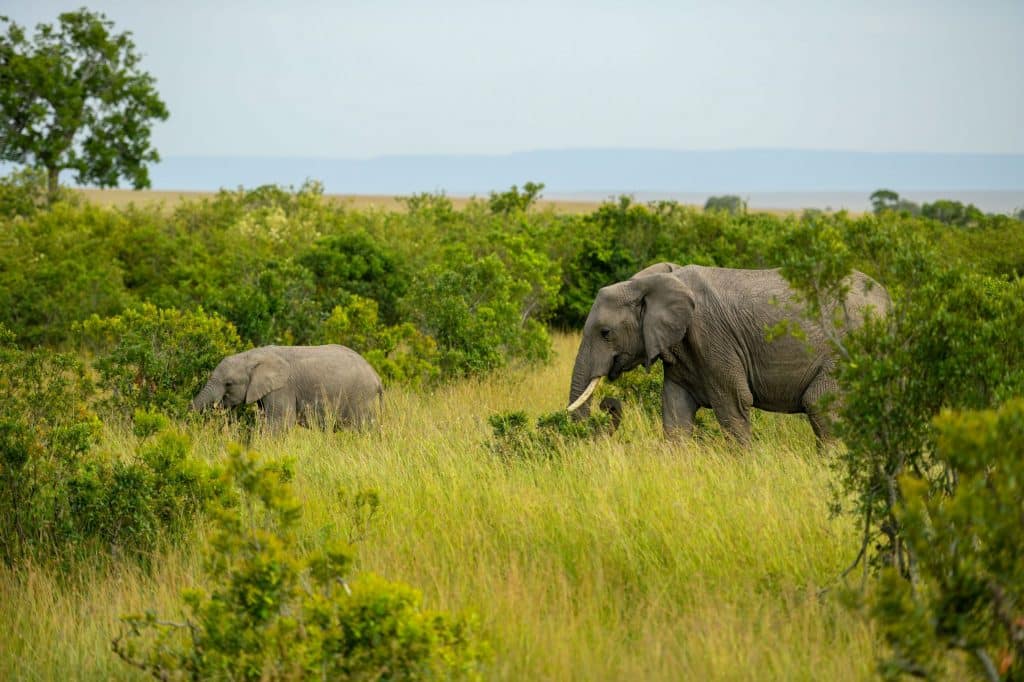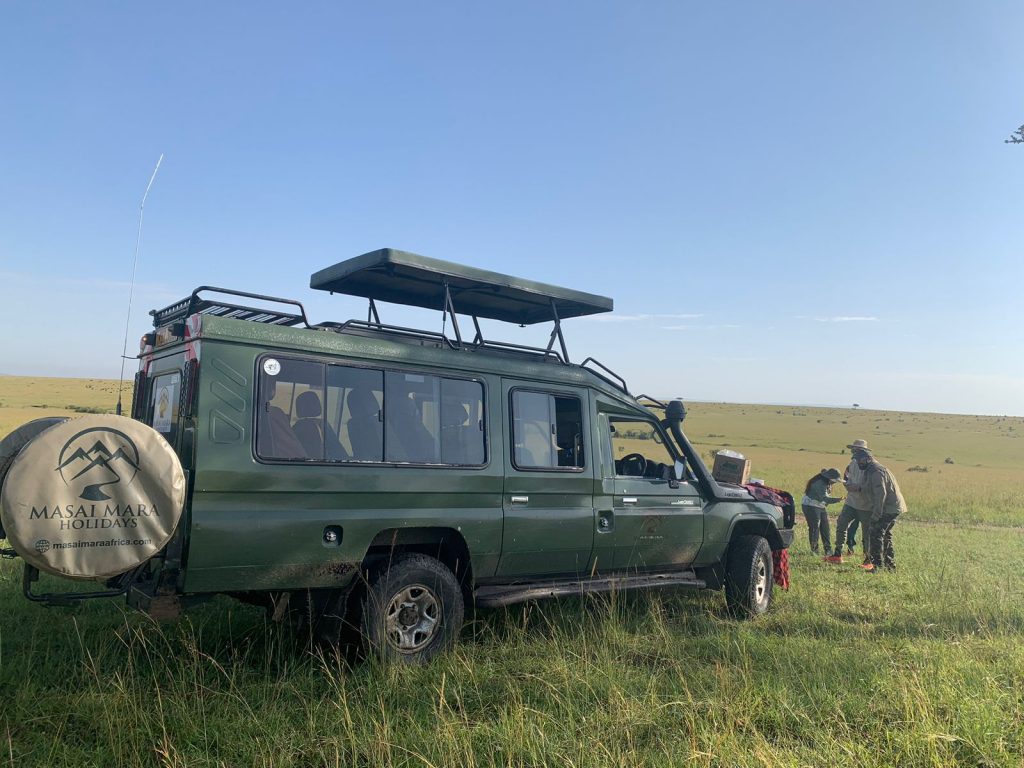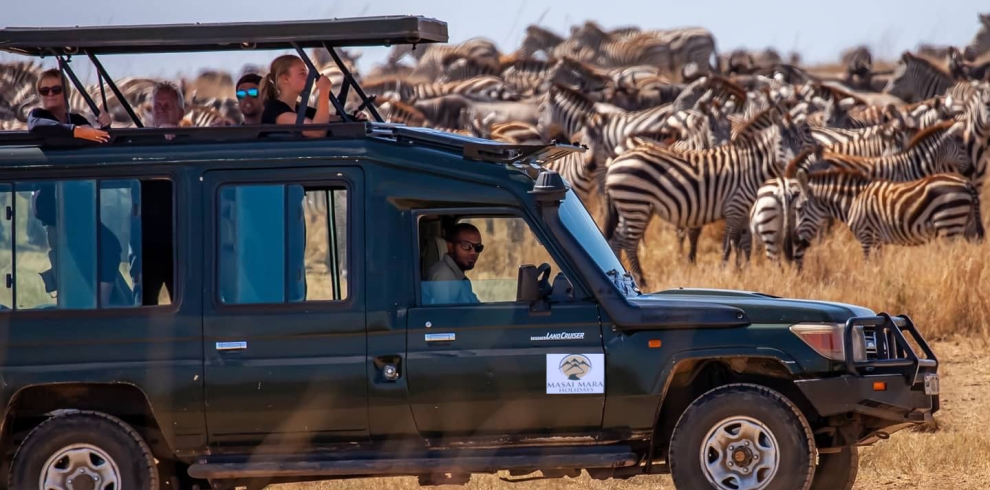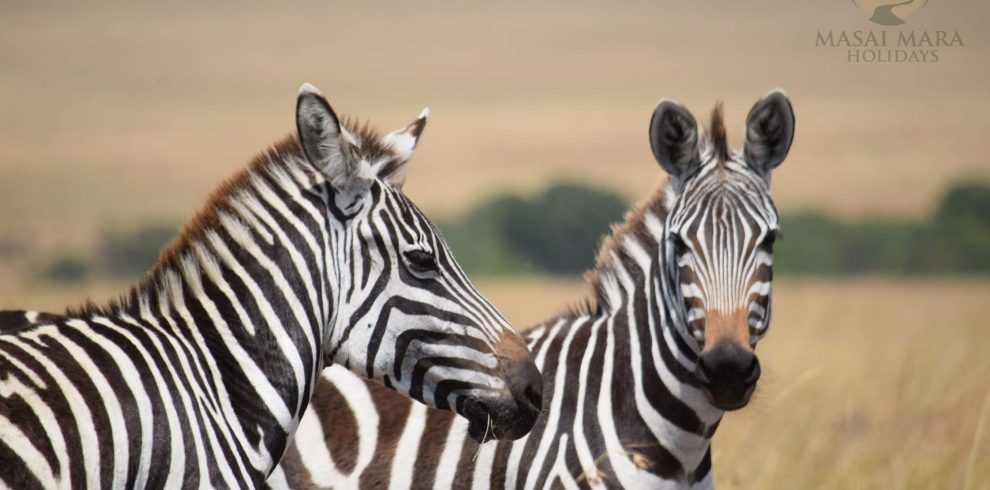Masai Mara National Reserve is one of the most famous and popular wildlife destinations in Africa, and for good reason. It is home to a stunning variety of animals, from the majestic Big Five to the elusive leopards, from the speedy cheetahs to the massive elephant herds. In this blog post, we will explore some of the must-see wildlife encounters in Masai Mara that will make your trip a memorable one.
Masai Mara National Reserve is a large game reserve in southwestern Kenya, covering an area of 1,510 square kilometers. It is named after the Maasai people, the traditional inhabitants of the area, and their word for “spotted”, which describes the landscape of rolling hills and acacia trees. Masai Mara is part of the Greater Mara Ecosystem, which also includes the Serengeti National Park in Tanzania. The reserve is famous for its abundant and diverse wildlife, especially the large predators and herbivores that roam its plains.
The Great Migration
One of the most spectacular wildlife phenomena in the world is the Great Migration, which involves millions of wildebeest and zebra moving across the Serengeti-Mara ecosystem in search of fresh grass and water. The migration is a continuous cycle that follows the seasonal rains and patterns. The best time to witness the Great Migration in Masai Mara is from July to October, when the wildebeest and zebra cross the Mara River, facing crocodiles, lions, and other dangers along the way. This is a thrilling and dramatic sight that you don’t want to miss.

Big Five Encounters
The Big Five are the five most iconic and sought-after animals in Africa: lion, leopard, elephant, buffalo, and rhinoceros. Masai Mara is one of the best places to see all five of them in their natural habitat. Here are some tips on where and how to spot them:

- Lion: The king of the beasts can be found throughout Masai Mara, but some of the best areas to see them are Musiara Marsh, Paradise Plain, and Olololo Escarpment. You can witness lion prides hunting, resting, playing, and interacting with each other.
- Leopard: The most elusive of the Big Five, leopards are solitary and nocturnal creatures that prefer dense vegetation and rocky outcrops. Some of the best areas to spot them are Talek River, Olare Orok Conservancy, and Ntiakitiak River. You can observe their unique markings, climbing skills, and hunting prowess.
- Elephant: The largest land animal on earth can be seen in large numbers in Masai Mara, especially near water sources and acacia woodlands. Some of the best areas to see them are Ololaimutiek Gate, Oloololo Gate, and Siana Conservancy. You can encounter elephant families led by matriarchs, and learn about their social structure, communication, and intelligence.
- Buffalo: The most dangerous of the Big Five, buffalos are formidable animals that live in large herds and defend themselves fiercely against predators. Some of the best areas to see them are Mara Triangle, Mara North Conservancy, and Lemek Conservancy. You can witness their impressive horns, strength, and stamina.
- Rhinoceros: The most endangered of the Big Five, rhinos are rare and precious animals that face poaching threats and habitat loss. Some of the best areas to see them are Ol Choro Oiroua Conservancy, Ol Pejeta Conservancy, and Lewa Wildlife Conservancy. You can admire their massive size, horned features, and grazing habits.
Popular Masai Mara Safaris
Lion Pride Activities
Lions are social animals that live in groups called prides, which consist of one or more males and several females and their cubs. Masai Mara has some of the largest and most famous lion prides in Africa, such as the Marsh Pride, the Ridge Pride, and the Rekero Pride. You can gain insight into their behavior and social structure by observing them closely. You can also witness some of their most exciting activities:

- Hunting: Lions hunt cooperatively by stalking their prey and ambushing them from different angles. They usually hunt at dawn or dusk when their prey is less alert. They prefer large herbivores such as wildebeest, zebra,and buffalo.
- Interacting: Lions communicate with each other through vocalizations such as roars, growls, and purrs, as well as body language such as rubbing, licking, and grooming. They also show affection, playfulness, and dominance through these interactions.
- Conserving: Lions face many threats such as habitat loss, human-wildlife conflict, and diseases. They also compete with other predators such as hyenas, cheetahs, and leopards for food and territory. It is important to conserve lion populations in Masai Mara by supporting conservation efforts and respecting their space.
Cheetah Hunts and Speed
Cheetahs are the fastest land animals in the world, capable of reaching speeds of up to 120 km/h in short bursts. They are also excellent hunters, using their speed, agility, and vision to catch their prey. Masai Mara is one of the best places to see cheetahs in action, as they have plenty of open space and prey to chase. Here are some of the things you can learn and see about cheetahs in Masai Mara:

- Hunting: Cheetahs hunt mostly during the day, when they can spot their prey from a distance and avoid competition with other predators. They usually target small to medium-sized herbivores such as gazelles, impalas, and hares. They stalk their prey until they are within 50 to 100 meters, then sprint towards them and trip them with their claws. They kill their prey by biting their throat or neck.
- Speed: Cheetahs have a unique anatomy that allows them to run fast. They have long legs, a flexible spine, a large heart and lungs, a small head and ears, and a long tail that acts as a rudder. They also have black tear marks on their face that reduce glare from the sun and help them focus on their prey.
- Sprints: Cheetahs can only maintain their top speed for a few seconds, as they use up a lot of energy and overheat quickly. They need to rest and cool down after each hunt, which makes them vulnerable to losing their kill to other predators or scavengers. You can witness cheetah sprints and hunts in Masai Mara if you are lucky and patient.
Leopard Spotting in the Masai Mara
Leopards are elusive and solitary creatures that are rarely seen by humans. They are also adaptable and versatile animals that can live in a variety of habitats, from forests to deserts. Masai Mara is one of the few places where you have a chance to spot leopards in the wild, as they have a healthy population and prey base. Here are some tips and facts about leopards in Masai Mara:

- Spotting: Leopards are nocturnal and secretive animals that prefer dense vegetation and rocky outcrops where they can hide and rest. They are also excellent climbers that can drag their kills up trees to avoid losing them to other predators or scavengers. Some of the best areas and times to spot leopards in Masai Mara are Talek River, Olare Orok Conservancy, Ntiakitiak River, early morning, and late evening.
- Characteristics: Leopards have a distinctive coat pattern of black spots on a yellowish-brown background, which helps them camouflage in their environment. They also have powerful jaws, sharp claws, and muscular bodies that enable them to hunt a variety of prey, from rodents to antelopes. They are solitary animals that only come together for mating or raising cubs.
- Behaviors: Leopards are territorial animals that mark their boundaries with urine, feces, and scratches on trees. They also communicate with each other through vocalizations such as growls, snarls, and coughs. They are opportunistic hunters that can kill prey larger than themselves by using stealth, speed, and strength.
Elephant Herds and Matriarchs
One of the most awe-inspiring sights in Masai Mara is the sight of a large elephant herd moving across the plains. Elephants are highly intelligent and social animals, with complex family structures and communication systems. The elephant herds are led by matriarchs, who are the oldest and most experienced females in the group. They are responsible for making decisions, teaching the younger generations, and ensuring the safety and well-being of the herd.

When you encounter an elephant herd in Masai Mara, you will be able to observe their fascinating interactions and behaviors. You will see how they greet each other with trunk touches, how they protect their calves from predators, how they use their ears and tails to express their emotions, and how they communicate with each other using low-frequency rumbles. You will also learn about the conservation challenges that elephants face in Masai Mara, such as habitat loss, human-wildlife conflict, and poaching. Elephants are vital for maintaining the ecosystem balance and biodiversity in Masai Mara, and they need our support and protection.
Buffalo Gatherings
Another impressive sight in Masai Mara is the sight of a huge buffalo gathering. Buffalos are one of the most abundant and widespread herbivores in Africa, and they can form herds of hundreds or even thousands of individuals. Buffalos are also one of the most formidable animals in Masai Mara, with their massive horns, muscular bodies, and aggressive temperament. They are not afraid to stand their ground against predators, such as lions, hyenas, or crocodiles.
When you witness a buffalo gathering in Masai Mara, you will be able to appreciate their strength and resilience. You will see how they graze together in tight formations, how they defend each other from attacks, how they wallow in mud pools to cool off and deter parasites, and how they display dominance and hierarchy within the herd. You will also discover how buffalos play a crucial role in maintaining the ecosystem balance in Masai Mara, by creating grazing patches, dispersing seeds, and providing food for other animals.
Unique Bird Species
Masai Mara is not only a paradise for mammals, but also for birds. It is home to over 500 bird species, ranging from large and colorful to small and inconspicuous. Some of the unique bird species that you can find in Masai Mara include ostriches, secretary birds, vultures, eagles, owls, hornbills, rollers, bee-eaters, weavers, sunbirds, and many more. Each bird species has its own distinctive features, behaviors, and adaptations.
When you go birdwatching in Masai Mara, you will be amazed by the diversity and beauty of the avian life. You will see how ostriches run at high speeds across the savanna, how secretary birds hunt snakes and rodents with their long legs and sharp beaks, how vultures scavenge carcasses and clean up the environment, how eagles soar high in the sky and spot their prey from afar, how owls hunt at night with their keen eyesight and hearing, how hornbills use their large bills to crack open fruits and seeds, how rollers dazzle with their iridescent plumage and acrobatic flight displays, how bee-eaters catch insects in mid-air with their slender bills, how weavers build intricate nests with grasses and twigs, and how sunbirds sip nectar from flowers with their long tongues. You will also learn about the best areas and times for birdwatching in Masai Mara, such as the riverine forests,
the marshes, the woodlands, and the open grasslands.
Endangered Species Conservation
Masai Mara is not only a place to see wildlife, but also a place to support wildlife conservation. Many of the animal species that live in Masai Mara are endangered or threatened, due to various factors such as habitat loss, poaching, disease, and climate change. Some of these species include the black rhinoceros, the African wild dog, the cheetah, the Grevy’s zebra, and the Rothschild’s giraffe. These species are vital for maintaining the ecosystem balance and biodiversity in Masai Mara, and they need our help to survive and thrive.
When you visit Masai Mara, you will have the opportunity to learn about the conservation efforts that are being done to protect these endangered species. You will see how the Kenya Wildlife Service, the local communities, the NGOs, and the private sector are working together to monitor, manage, and restore the wildlife populations and habitats in Masai Mara. You will also find out how you can support these conservation initiatives by donating, volunteering, or adopting an animal.
Responsible Wildlife Viewing
One of the most important things to remember when you visit Masai Mara is to practice responsible and ethical wildlife viewing. This means that you should respect the animals, their habitats, and their behaviors, and minimize your disturbance and impact on them. By doing so, you will not only ensure your own safety and enjoyment, but also the welfare and conservation of the wildlife.

Some of the tips for responsible wildlife viewing in Masai Mara include:
- Follow the rules and regulations of the park and your guide.
- Keep a safe and respectful distance from the animals, and do not approach, chase, or feed them.
- Stay on the designated roads and tracks, and do not drive off-road or over vegetation.
- Keep quiet and avoid making loud noises or sudden movements that may scare or stress the animals.
- Do not litter or leave any trace of your visit, and dispose of your waste properly.
- Do not touch or collect any plants, animals, or artifacts, and respect the cultural heritage of the area.
- Support sustainable tourism in Masai Mara, and choose eco-friendly accommodation and activities.
The Masai Mara is a place where you can experience some of the most amazing wildlife encounters in the world. You can see elephant herds and matriarchs, buffalo gatherings, unique bird species, endangered species conservation, and practice responsible wildlife viewing. These are just some of the must-see wildlife encounters in Masai Mara that will make your safari unforgettable.
If you are interested in planning your own wildlife safari in Masai Mara, you get reach out to us at Masai Mara Holidays. We are a reputable and reliable provider of safari tours and packages in Masai Mara. We have a team of professional and experienced guides, drivers, and staff who will ensure that you have a safe, comfortable, and memorable safari. We also have a range of accommodation options, from luxury lodges to budget campsites, to suit your preferences and budget. We also offer customized itineraries, flexible dates, and competitive prices.




